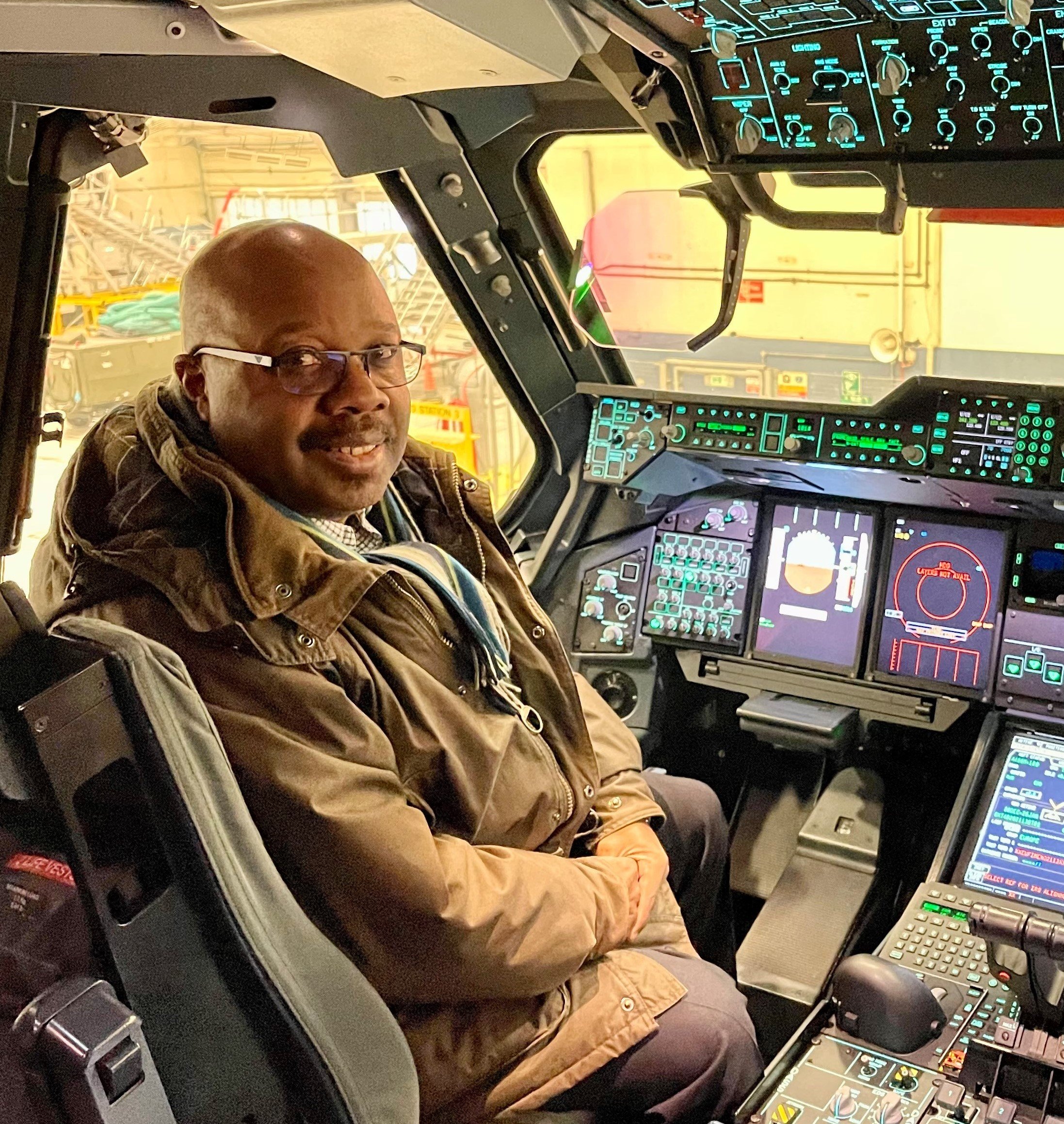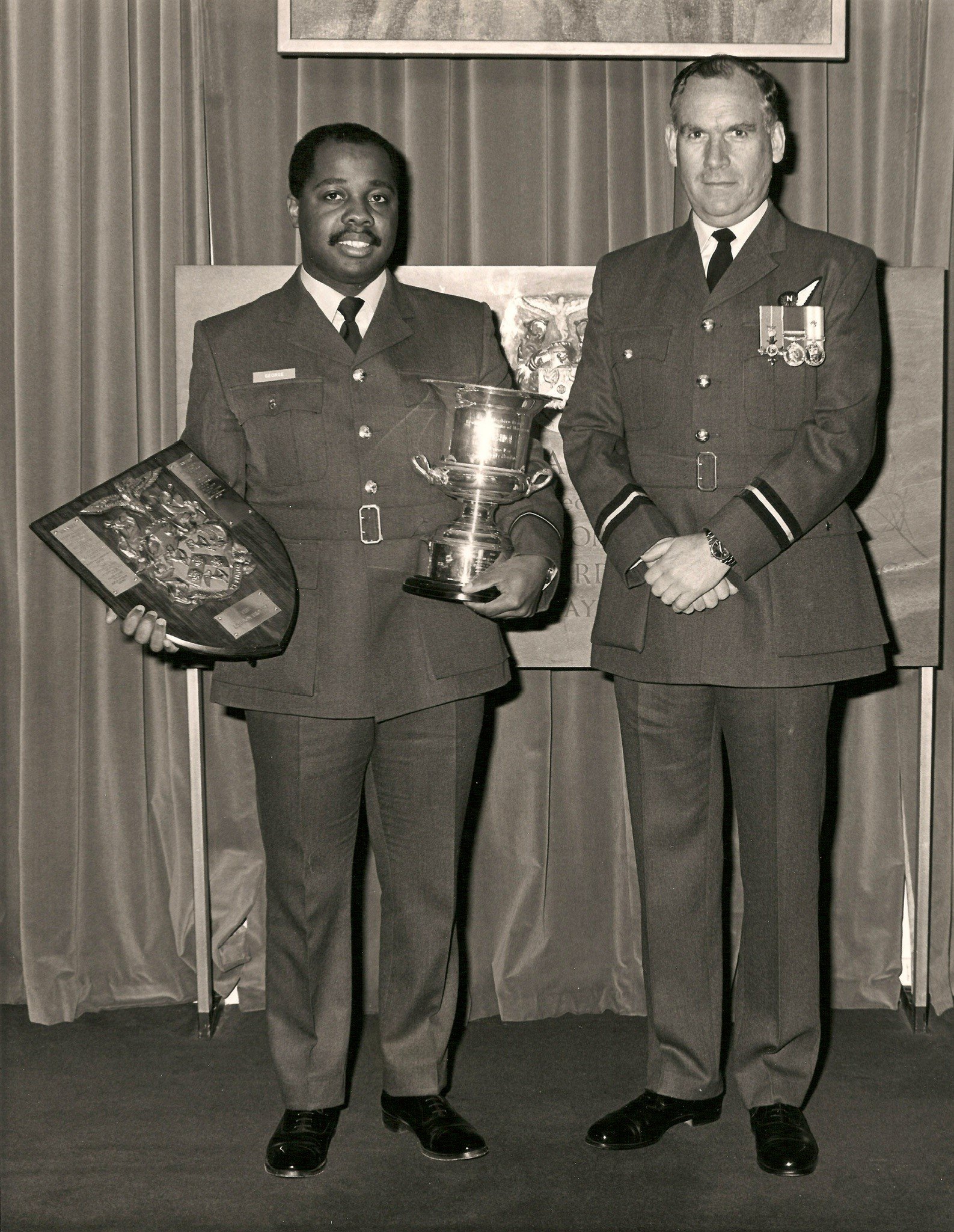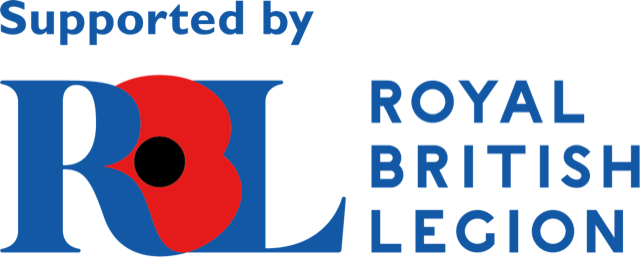
Esmon George, MBE
Royal Air Force
Esmon’s father came to the UK in 1962 from Dominica. Followed a year later by Esmon’s mother, the couple then married and settled in Ilford, Essex.
Growing up, Esmon says that it was a very multicultural area. He recalls that at school, “We had a lot of people from different backgrounds, although what I think was interesting is that it wasn’t like ‘your parents are from this island and your parents are from that island’. You were just Black.”
His father had hoped that Esmon would become a doctor, but he was to choose a different career. “I started to read comics, specifically Warlord, when I left primary school. That got me interested in the military, in World War Two, because that’s what Warlord was centred on. I enjoyed the Air Force related stories the most and decided to join the RAF Cadets – the Air Training Corps as it was then. I joined as soon as I could, and was enrolled in March 1978, aged 14. I didn’t get any grief for joining and I wasn’t the only one in the family who did. One of my cousins was in the Air Cadets, in a different squadron.
When Esmon decided he would go into the Royal Air Force, his parents were very supportive. “They said, ‘If that’s what you’re going to do, that’s what you’re going to do.’ So, I did A-Levels at school and I applied to join as a pilot in 1982, which was just after the Falklands War. At that time, the Air Force was awash with candidates and applications, so I didn’t even get to officer selection at that time. So, I decided to join up as an airman, without going to university or anything, and that’s when my career started, in 1983.”
The headlines surrounding the Harrier jets and the Falklands inspired a huge number of eager recruits, but for Esmon it was all down to a chance encounter when he was a cadet.
“I vividly remember the first time I saw a Black pilot in the Air Force. A fast-jet pilot. I was on summer camp at RAF Laarbruch in [West] Germany. We were waiting outside the Squadron Headquarters for a visit and a staff car pulls up, almost does a hand-brake turn in the parking space and this pilot jumps out… I was just stood there with my mouth open, because it was the first time I’d seen a Black officer, far less a Black pilot. A guy called Noel Osborne, who I actually eventually met, a few years ago. So, I got to meet one of my heroes, my inspiration… the seed was well planted before the Falklands War.”
Arriving at RAF Swinderby, Lincolnshire, in 1983, Esmon says that his time in the cadets gave him a significant confidence boost ahead of his basic training. “I was issued my uniform, and within a couple of hours, or certainly by the first night, all my shirts were pressed up to the standard required. My shoes were ready and polished and my uniform shipshape.” Esmon was awarded best recruit on his course and went on to train as an assistant air traffic controller.
“If you imagine the control tower, you have the individual controller who speaks to all the aeroplanes; they are supported by an assistant who provides them with the information that they need to do their job, but also communicates with other agencies – the non-flying – to support the airfield activity. That was either in a control tower or in a radar centre where you have the banks of monitors and everyone is responsible for a certain amount of air space.”
Early on in his career, Esmon explains, he concluded that “I could either be known as somebody who is either pretty efficient at their job and sociable – I used to DJ at the Airman’s Club – or I could be known as an idiot. If I’m an idiot, I’m going to stand out more as an idiot, than I would do as the average white guy.” Working hard and earning the respect of his senior officers, Esmon was promoted to Corporal in 1987 after only four years, well ahead of his peers. Aged 25, Esmon successfully applied for officer training and in 1990 graduated from RAF Cranwell as a logistics officer.
Esmon found others in the RAF were quick to judge him. “There’d be an assumption… you’d be in civilian clothing and the guards would be looking at you and they would have an expectation of what level you were. You give them your ID card and they’d look at it and they’d be, ‘Oh Flying Officer! Oh right.’ And it’s almost a double-take. That happened a couple of times… I knew that I had to prove myself wherever my career was going to take me at that time.”
After completing his officer course, Esmon also did his professional training at RAF Cranwell, winning not only the course prize, but also the communications prize and best student of the year. “I had a really good start to my commissioned career.”
During his career, Esmon was deployed to Saudi Arabia, Cyprus, Sardinia, the Falklands, Germany and across the UK. In the late 1990s, Esmon was promoted to Squadron Leader, working indirectly for the Chief Engineer of the Royal Air Force in Logistics, Planning and Co-ordination. “One of my key responsibilities was introducing management planning into the Air Force”. For this contribution to the efficient running of the Headquarters, and voluntary work supporting the Royal Air Force Charitable Trust, a local school and managing a children’s football team, Esmon was awarded an MBE in the 2002 Queen’s Birthday Honour’s List.
Throughout his time in the RAF, Esmon kept up his interest in music and sport. “There was only one telephone in the NAAFI and another pay-phone in the Guard Room. So phoning home wasn’t that often, so you had to find stuff to do. You had to get involved… Being a DJ meant that I was part of the social committee for the Junior Ranks Club… I played football and cricket for the station, rugby as well.”
Esmon made many friends in the RAF. “You really understand how people are and you get to see them a lot closer than would be the case otherwise. Certainly in my early Air Force career, for most of us, it was the first time we’d really been away from home and we hadn’t done uni or anything like that… Those relationships in that first tour, especially when you are there for between two to three years, maybe a bit longer: they become really solid bonds.”
Leaving the RAF in 2002 after 20 years, Esmon went to work for Transport for London before joining the Civil Service. Looking back over his career, he says, “In the same way that I was inspired by Noel Osborne, if someone else can see that you actually can do well by application and being seen to be good at your job and efficient, there’s a win-win.”









